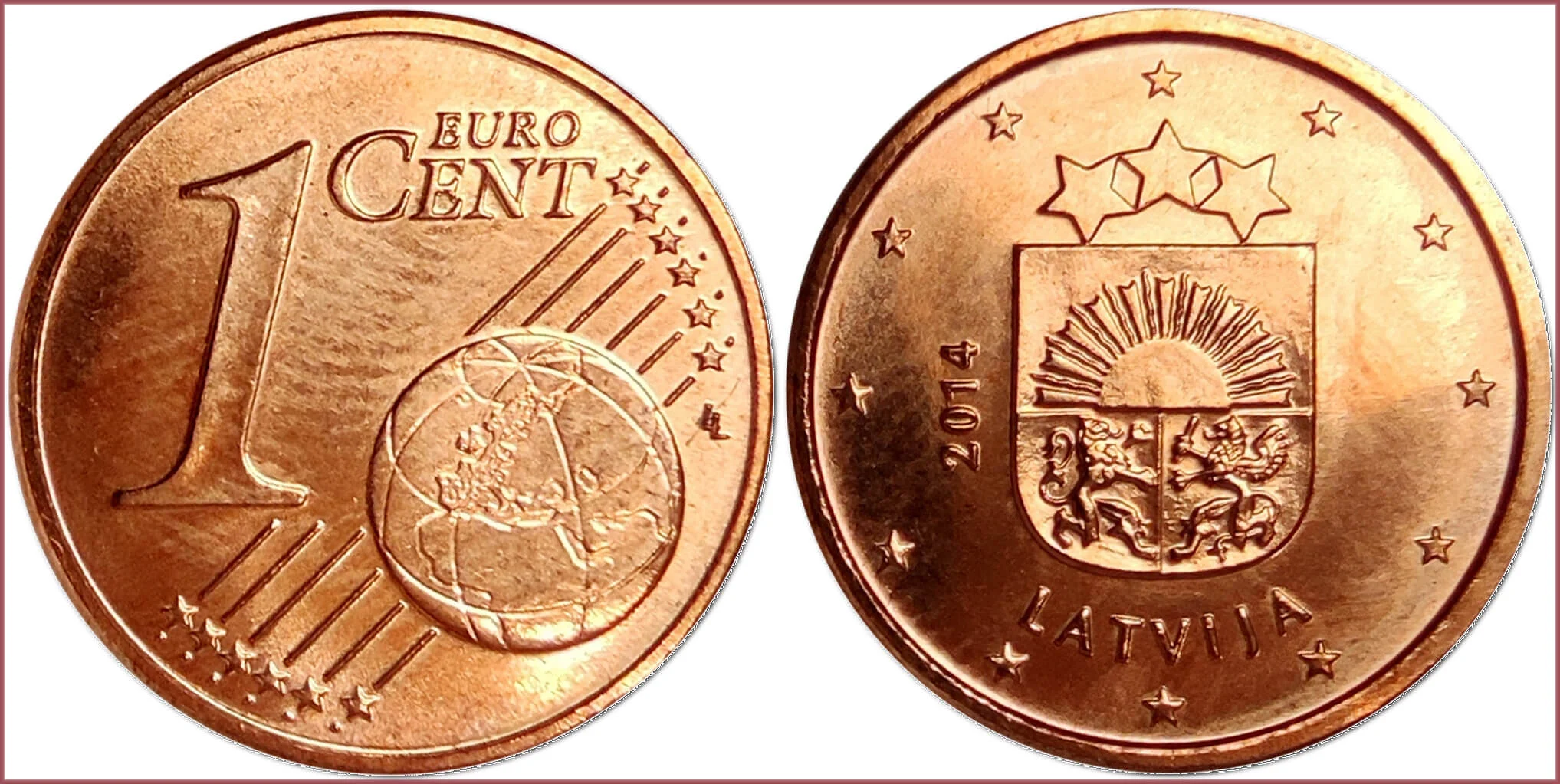EURO CENT: COIN OF LATVIA (EUROPEAN UNION)
1 euro cent, 2014: Republic of Latvia (European Union)
1 EURO CENT.
LATVIJA: "Latvia" in Latvian.
Coat of arms of the Republic of Latvia.
Engravers: Luc Luycx (sign "LL"), Laimonis Šēnbergs and Jānis Strupulis.
Mintage: 120.000.000.
Karlsruhe mint (Germany).
- Copper plated steel: 16.25 mm - 2.3 g
- Reference price: 0.2$
COIN EURO CENT — WHERE & WHEN (coins catalog: by names & emitents)
- EUROZONE COUNTRIES + EUROPEAN MICROSTATES (Austria, Belgium, Croatia, Cyprus, Estonia, Finland, France, Germany, Greece, Ireland, Italy, Latvia, Lithuania, Luxembourg, Malta, Netherlands, Portugal, Slovakia, Slovenia, Spain + Andorra, Monaco, San Marino, Vatican; 1999-...): euro cent = 1/100 euro
The name of the euro cent coin is used to distinguish this coin from other cents and to emphasize its direct relationship with the euro currency.
Euro cent is a subsidiary coin as 1/100 euro for the Eurozone countries, as well as for European microstates that also have the right to issue and use euro coins.
Each of these countries produces euro cents (1, 2, 5, 10, 20 and 50) with a common reverse design (designer Luc Luycx, sign "LL") and individual, national obverse. First introduced into circulation in 2002, although some contain the date "1999" (year of manufacture, not actual introduction). Coins of denominations of 1, 2 and 5 euro cents are made of copper plated steel, while coins of higher denominations — 10, 20 and 50 euro cents — are made of "northern gold" (an alloy consisting of copper, aluminum, zinc, tin and has a number of advantages: does not fade, has antibacterial properties, does not cause allergies).











